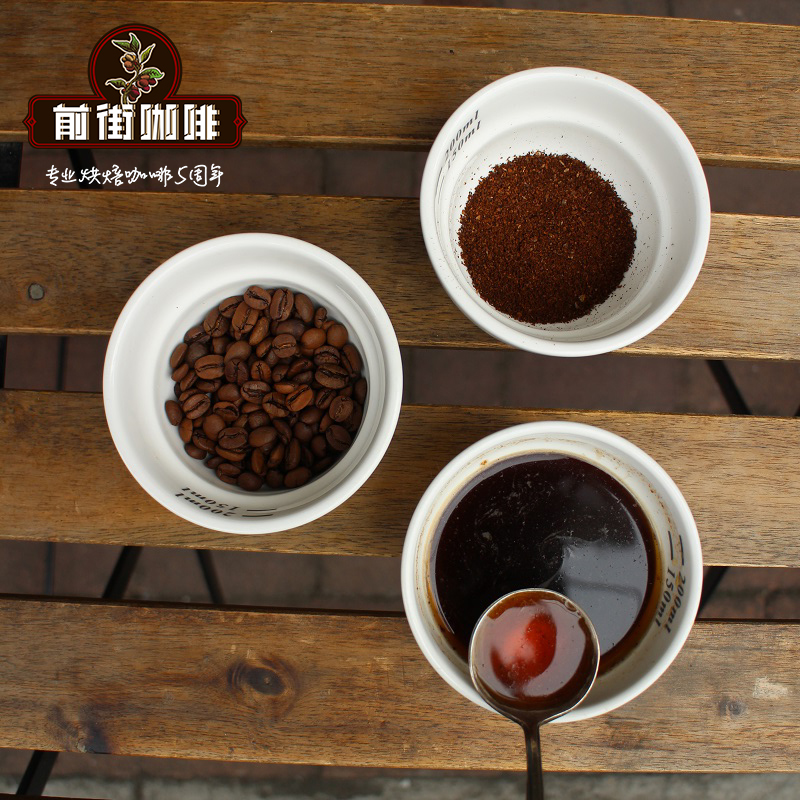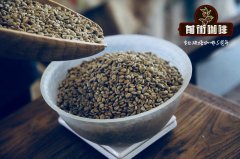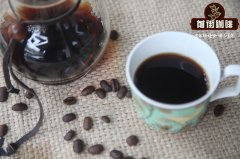The difference between tanning and washing Coffee Flavor description of sun-cured coffee beans from different coffee producing areas

Professional coffee knowledge exchange more coffee bean information please follow the coffee workshop (Wechat official account cafe_style)
Various treatments of Coffee fruits
The basic skills of good quality coffee
Since the Kuroshio [* Note], coffee beans on the market have also put forward the slogan of "fine products" one by one, advocating a dazzling variety of coffee bean choices such as single producing areas, microclimates, and various treatments, and discussing a variety of aromas and flavors. It has been discussed earlier that the most important base for a perfect cup of coffee is the quality of the coffee bean itself. Good coffee fruit needs to go through a complicated and time-consuming and delicate and patient process before it can become a high-quality raw coffee bean.
* Note: the third wave of coffee aesthetics, which is currently popular, advocates not adding sugar or milk, but enjoying the original flavor of a single black coffee.
As a modern Taiwanese coffee glutton, in addition to tasting the flavor characteristics of coffee from different producing areas, everyone also has their own preferred treatment methods, such as water washing, sun exposure, honey treatment, and so on. Although the traditional washing treatment method is mostly used in the market, the choice of treatment method actually varies from person to person, and there is no absolute difference between good and bad. Even if the processing methods of all kinds of coffee fruits are slightly different, they are also different in flavor and taste. On the whole, the choice of treatment depends on each person's preference for different flavors. Being able to find your favorite flavor and treatment is the beginning of taste.
The internal structure of coffee fruit
Coffee fruit profile
Although many people have drunk coffee, they don't know what the coffee fruit looks like. The fruit picked from the coffee tree (also known as coffee cherry Coffee Cherry) is structurally divided into pericarp, pulp, pectin layer, hard shell (or sheepskin), silver skin, and innermost coffee bean seeds.
From coffee fruit to raw bean
With the different regions, climates, and even elevations of coffee producing areas, each factor has a key influence on the choice of treatment methods. Therefore, no matter which method of treatment, the structure of each layer of fruit has its different intention. The following are the more common treatments:
Sun treatment Natural Process
Before the coffee drinking habit began, Arabs were already using the sun method to treat coffee, which is the oldest method of coffee fruit treatment, and is mostly suitable for areas with plenty of sun.
Flavor: soft acidity, rich layers, obvious sweetness, good quality sun beans will have fruit or wine flavor.
Preliminary selection of beans: in the stage of manual picking, pick the coffee fruit with the same maturity, and then rinse the surface of the coffee fruit with clean water.
Sun-drying: put the fresh coffee fruit in the exposure field for sun-drying, after about 2-4 weeks of continuous turning and natural drying until the water content is about 12%.
Remove the shell: after the drying is completed, the peel, pulp and shell are removed directly by the sheller.
Advantages: the operation is simple and does not need complex equipment.
Disadvantages: there are many defects in the appearance of raw coffee beans.
Washing Washed Process
Water washing is a technology invented by the Dutch in the 18th century. It is suitable for rainy areas. Although the process is quite tedious, it is currently a more common method of raw bean treatment, accounting for about 70% of the total coffee.
Flavor: acidity is strong, taste is cleaner, refreshing and bright.
Sift out floating beans: rinse the coffee fruit with clean water and remove the immature fruit that floats on the surface.
Remove the pulp: the fresh fruit is sent to the pulp sieving machine for peel and pulp removal.
Pectin removal: after removing the pulp, the seeds are moved into the fermentation tank, after about 16 to 36 hours of natural fermentation, dissolve the surface pectin and then wash.
Drying and shelling: keep exposed for 1 to 3 weeks to reduce the water content to 12%, and then remove the shell with a sheller.
Advantages: the appearance of raw beans is complete, and the quality is the most consistent.
Disadvantages: the treatment process consumes a lot of water and the cost is high.
Semi-washed Semi-Washed Process
Compared with the more traditional water washing method, semi-washing is an improved treatment method, which is very similar to the water washing method in the treatment process, except that the process of pectin removal by fermentation is replaced by a machine, so it takes less time.
Flavor presentation: between washing and tanning, a little sweeter than washing, but also a little more sour than tanning.
Screen the floating beans: wash the coffee fruit with clean water, remove the peel and leave the pulp.
Remove the pulp: the fresh fruit is sent to the pulp sieving machine for peel and pulp removal.
Remove pectin: put the coffee beans into a pectin scraper to remove pectin from the shell.
Drying and shelling: keep exposure for 1 to 3 weeks to reduce the water content to 12%, and then use a sheller to remove the shell.
Advantages: save a lot of water consumption costs.
Disadvantages: coffee has a mild and mild flavor.
Honey-treated Honey Process
Honey treatment, also known as peeling sun treatment, is the most difficult and risky of all treatments. At present, there are three different honey treatments, which vary according to the proportion of pulp left after peeling.
The flavor shows: low acidity, high sweetness and fruity aroma, the cleanliness of the taste is higher than that of sun beans, and there is a tail of fermented wine after drying.
Peel off: after washing the coffee fruit with clean water, remove the peel and leave the pulp.
Sun drying: keep the flesh containing sugar to be exposed to the sun together. At this stage, it must be stirred to avoid mildew of raw beans.
Get raw beans: remove pulp, pectin and shell at once after drying.
Advantages: enhance the thickness and sweetness of the coffee, and the aroma is more meticulous.
Disadvantages: the cost of manpower and time is high.
Persistence from the highest quality
The origin of coffee beans is generally in less developed countries, and they are treated differently according to the local climate. From the very beginning of planting, in addition to paying attention to the friendliness of nature and environmental protection, paying attention to the issue of soil and water conservation, and improving the healthy growth of coffee plants, choose to pick coffee fruits artificially (mainly Arabica beans with high economic value), and then screen out all defective beans, etc., each link requires 100% attention.
Who has ever wondered how many people's painstaking efforts are hidden behind it while tasting the mellow coffee? Coffee from planting, picking, processing, to roasting, grinding, brewing, and so on, how many people pay attention to and adhere to the quality? For those of us who love coffee, this is a perfect cup of coffee with rich stories, so hard to get.
Qianjie coffee: Guangzhou bakery, the store is small but a variety of beans, you can find a variety of unknown beans, but also provide online store services. Https://shop104210103.taobao.com
Important Notice :
前街咖啡 FrontStreet Coffee has moved to new addredd:
FrontStreet Coffee Address: 315,Donghua East Road,GuangZhou
Tel:020 38364473
- Prev

Introduction to the characteristics of tanning coffee is there any difference in the degree of drying between water washing and sun treatment?
Professional coffee knowledge exchange more coffee bean information Please pay attention to the coffee workshop (Wechat official account cafe_style) A good cup of coffee not only takes into account the variety, origin, environment and roasting, among which the treatment that dominates the flavor and aroma of coffee is very important. Different treatments can add a unique flavor to the coffee. There are three main treatments that we are familiar with.
- Next

Introduction to the characteristics of washed coffee beans what are the characteristics of the taste and flavor of washed sunny coffee beans?
Professional coffee knowledge exchange more coffee bean information Please pay attention to the coffee workshop (Wechat official account cafe_style) Coffee treatment: washing coffee beans compared with the sun method introduced last week, the water-washed coffee treatment method has more artificial traces and the process is much more tedious, no wonder another English name for tanning method is natural process. Master of washing method
Related
- What is the meaning of lactic acid fermentation with coffee bean treatment?
- How to judge the state of foam by sound?
- How does the latte pull out the unicorn pattern? Come to get for a little trick to improve the flower pull!
- Will flower pulling affect the taste of the latte?
- Do you know the history of coffee?
- The difference between honey treatment and sun washing what is raisin honey treatment?
- What kind of milk can a novice use to make coffee foam to keep the foam longer? The correct method and skills of milking tutorial sharing
- Why do washed coffee beans taste sour? Flavor characteristics of washed Coffee
- Introduction to the skill of how to practice the size and height of water injection around the circle of hand-brewed coffee
- How do beginners practice coffee flower drawing from scratch?

